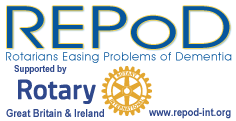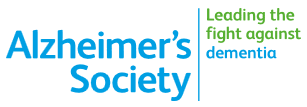During the first half hour, everyone has the opportunity to raise any concerns, questions/topics to be discussed and also if anyone has any recommendations and suggestions which may be of interest to other carers.
One of the carers suggested a speaker at one of our future carers group meetings – A Consultant Uro/Neurologist. I have in fact already sent him an email invitation.
Another carer mentioned about an interesting talk they heard recently at a Zoom meeting about Montessori teaching and how perhaps this could also be applied for those living with dementia. The Montessori method was developed by Italian physician Maria Montessori emphasizing independence. It is a method of education that is based on self-directed activity, hands on learning and collaborative play. It is about getting children to learn independently and reach their unique potential.
Another carer raised concerns about some of the challenges she was experiencing with her husband who has Vascular Dementia and wanted to understand about Vascular Dementia and how she could deal with some of the challenges. Andrew mentioned that he would be discussing some of these problems in his presentation.
Andrew Wrensch then gave a 30-minute seminar presentation about Vascular Dementia and the presentation slides have been sent to you via email.
A further discussion then followed after the presentation about hallucinations, obsessive compulsive disorders and what to do when someone’s appetite has deteriorated.
Andrew suggested that giving someone a big plate of food may be too frightening and therefore giving little bits of food at different times throughout the day would be better. Even food that is pureed can look appetising as there are ways of creating the pureed food into shapes that for example look like a fish. Please see an IDDSI poster with examples that has been sent to you via email.
Another carer asked when to consult a doctor if your loved one has deteriorated. Andrew mentioned that it was important if in doubt to always check with your GP. Lisa also stressed that we as carers are the best judge as we know our loved ones and can see if there are any changes. If we are concerned with any changes we should not hesitate to speak to a doctor for advice.
There was also a discussion about the importance of someone being well hydrated and having the right nutrition which can help to slow down the progression of Vascular dementia. Andrew mentioned about Jelly Drops. I have in fact 0rdered 7 Jelly Drop trays which I will bring to the next dementia club venues.
Here is the website for your information https://www.jellydrops.com/
Jelly Drops are award-winning sweets designed to boost hydration. They’re 95% water, sugar free and vegan with a fantastic, solid but smooth texture! Inventor Lewis Hornby was inspired to create water sweets after his late grandma Pat, who had dementia, was struggling to hydrate. Today, these deliciously fruity treats are designed to be enjoyed by everyone!
Andrew has provided us with a few recipe options which we can try – as below:
Here are a few Jelly Drop ideas that will help people increase fluid intake. An important way to think about fluid intake is not thinking about how we get someone to increase to their recommended amount but rather how can we increase someone’s intake by small %’s at a time. If we have get someone to have an extra few sips of fluid or “sweets” like the jelly drops, this can make a significant difference every day. Here are a few ideas:
We Make our jelly drops by taking 900mls water and 350g Jelly powder (very simple). Place them in small jelly moulds and place in the fridge (or freezer for a hot day) It will make a few trays of delicious bite sized jellies, if someone finishes all of them in a day, they would have consumed nearly 1 litre of fluid extra.
Tea, coffee and alcohol (less than 4%) still counts towards fluid intake for the day. Water is always best, but if someone isn’t drinking water, switch it around. Soup as a starter also helps to increase fluid intake.
Another idea: 2 cups juice – Orange juice, grape juice, whatever you want. You could even use your favourite blend of tea, or coffee (though coffee, in my experience, needs a little more gelatine to set properly).
Low heat until juice is hot, but before it starts to boil – once you see a bit of bubbles rising, add 2 tablespoons gelatine, and stir gelatine into hot juice until completely dissolved. Turn off heat Add another cup and a half of juice (or whatever), stir for another minute or so, then pour into a mould. You could pour it into ice cube trays, a Tupperware container (to cut in to slices), or any sort of silicone candy mould. Cover it, stick in the fridge overnight, and viola~ Bite-sized taste snacks, full of water.











